
5
Electromagnetic Compatibility Information – U.S.A.
System Classes
Please read all of the following information to determine the class
of system you have and the environment in which it should be
installed and operated.
In the United States, the Federal Communications Commission
(FCC) governs the levels of electromagnetic emissions from a
digital device. Electromagnetic emissions can interfere with radio
and television transmission. To reduce the risk of harmful
interference, the FCC has established requirements for
manufacturers of digital devices.
A manufacturer of a digital device must test and label the product to
inform an end-user of the maximum emission level from the product
when used in accordance with its instructions. The FCC has
established two classes of levels, Class A and Class B. A system
that meets the FCC Class A requirements may be marketed for use
in an industrial or a commercial area. A system that meets the more
stringent FCC Class B requirements may be marketed for use in a
residential area in addition to use in an industrial or a commercial
area.
An end-user in the United States is responsible for ensuring that his
system is suitable for its environment as stated in the above
paragraph and bears the financial responsibility for correcting
harmful interference.
For a system to be considered an FCC Class B system, all
peripherals of the system (workstation, monitor, keyboard, mouse,
external disk and tape drives, modem, printer, etc.) must be labeled
as such. If any peripheral or the workstation itself is labeled as FCC
Class A, the entire system becomes FCC Class A and should not
be used in a residential area.
To determine if your system is FCC Class A or FCC Class B,
you must check the marking on each peripheral and on your
workstation. Each piece of equipment should have an FCC
statement marked on the unit. The FCC statement should identify
the equipment as Class A or Class B. If there is no indication of the
Class in the FCC statement, consider it to be Class A unless there
is a mark which states “FCC ID:” followed by alphanumeric
characters. If it has this FCC ID mark, it is Class B. If any of the
peripherals in your system is not marked with an FCC statement,
the equipment should not be used in a home because of the greater
likelihood of interference to radio and television reception. Contact
the manufacturer of the peripheral if you have any questions.
If a PCI board is added to the workstation by the end-user, the FCC
Class of the machine could be affected. A PCI board should be
marked to indicate the FCC Class of the board. If an FCC Class A
PCI board is added to an FCC Class B workstation, the system
becomes FCC Class A.
Modifications
If the end-user adds single in-line memory modules (SIMMs) or
internal drives to the workstation, the FCC Class of the machine
could be affected. All SIMMs and internal drives offered by Sun for
use in a Sun™ workstation have been tested and will not change
the FCC Class labeled on the workstation if it is installed per the
instructions in the Sun Installation Guide.
If memory or drives are purchased from sources other than Sun,
the FCC Class of the workstation may be adversely affected.
Modifications not approved by Sun may void the authority granted
by the FCC to operate the equipment.
Shielded Cables
Connections between the workstation and peripherals must be
made using shielded cables in order to maintain compliance with
FCC radio frequency emission limits.
One of the following notices applies to your system. Please refer to
the appropriate statement.
FCC Class A Notice
If your system is FCC Class A, the following applies:
Note – This equipment has been tested and found to comply with
the limits for a Class A digital device, pursuant to Part 15 of the
FCC Rules. These limits are designed to provide reasonable
protection against harmful interference when the equipment is
operated in a commercial environment. This equipment generates,
uses, and can radiate radio frequency energy and, if not installed
and used in accordance with the installation manual, may cause
harmful interference to radio communications. Operation of this
equipment in a residential area is likely to cause harmful
interference, in which case the user will be required to correct the
interference at his own expense.
FCC Class B Notice
If your system is FCC Class B, the following applies:
Note – This equipment has been tested and found to comply with
the limits for a Class B digital device, pursuant to Part 15 of the
FCC Rules. These limits are designed to provide reasonable
protection against harmful interference in a residential installation.
This equipment generates, uses, and can radiate radio frequency
energy and, if not installed and used in accordance with the
instructions, may cause harmful interference to radio
communications. However, there is no guarantee that interference
will not occur in a particular installation. If this equipment does
cause harmful interference to radio or television reception, which
can be determined by turning the equipment off and on, the user is
encouraged to try to correct the interference by one or more of the
following measures:
• Reorient or relocate the receiving antenna.
• Increase the separation between the equipment and receiver.
• Connect the equipment into an outlet on a circuit different from the
circuit to which the receiver is connected.
• Consult the dealer or an experienced radio/TV technician for help.
Summary of Contents for Ultra 30
Page 11: ...9...
Page 13: ...11 1...
Page 15: ...13 2...
Page 17: ...15 3...
Page 19: ...17 3...
Page 21: ...19 4...
Page 25: ...23 5...
Page 27: ...25 5...
Page 29: ...27 5...
Page 31: ...29 6...
Page 33: ...31 6...
Page 35: ...33 6...
Page 37: ...35 7...
Page 39: ...37 7...
Page 41: ...39 7...
Page 43: ...41 8...
Page 45: ...43 8...
Page 47: ...45 9...
Page 49: ...47 10...
Page 53: ...51 12 J1301 J1401 J1501 J1601...
Page 55: ...53 13...
Page 61: ...59...

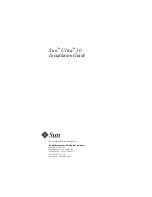

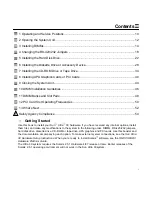
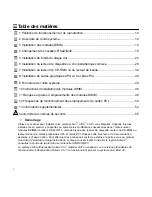

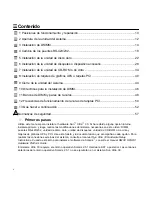
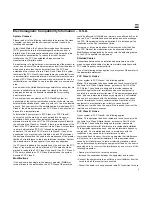
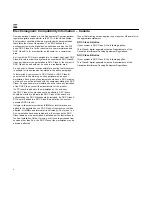
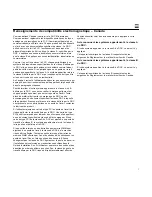
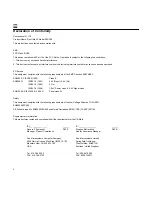

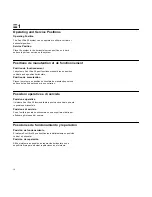
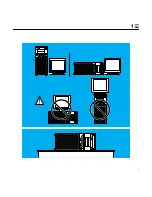
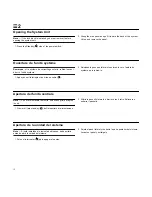

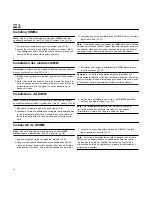
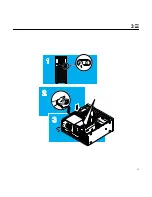
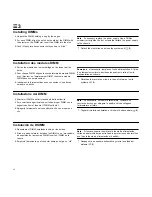

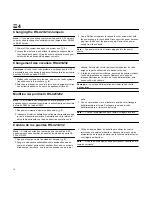
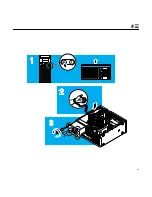
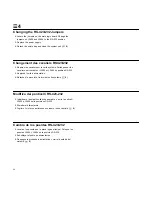














![Lenovo 90B6 [H50-50 ES] User Manual preview](http://thumbs.mh-extra.com/thumbs/lenovo/90b6-h50-50-es/90b6-h50-50-es_user-manual_201023-01.webp)


